The effects of different sensory augmentation on weight-shifting balance exercises in Parkinson's disease and healthy elderly people: a proof-of-concept study
- PMID: 26329918
- PMCID: PMC4557900
- DOI: 10.1186/s12984-015-0064-y
The effects of different sensory augmentation on weight-shifting balance exercises in Parkinson's disease and healthy elderly people: a proof-of-concept study
Abstract
Background: Earlier versions of biofeedback systems for balance-related applications were intended primarily to provide "alarm" signals about body tilt rather than to guide rehabilitation exercise motion. Additionally, there have been few attempts to evaluate guidance modalities for balance rehabilitation exercises. The purpose of this proof-of-concept study is to evaluate the effects of guidance modalities during common dynamic weight-shifting exercises used in clinical settings.
Methods: A motion guidance system providing visual biofeedback, vibrotactile biofeedback, or both, was used during weight-shifting exercises. Eleven people with idiopathic Parkinson's disease (PD) and nine healthy elderly people participated. Each participant wore a six-degree-of-freedom inertial measurement unit (IMU) located near the sacrum and four linear vibrating actuators (Tactors) attached to the skin over the front, back, and right and left sides of the abdomen. The IMU measured angular displacements and velocities of body tilt in anterior-posterior (A/P) and medial-lateral (M/L) directions. Participants were instructed to follow a slow moving target by shifting their weight in either the A/P or M/L direction up to 90 % of their limits of stability (LOS). Real-time position error was provided to participants in one of three sensory modalities: visual, vibrotactile, or both. Participants performed 5 trials for each biofeedback modality and movement direction (A/P and M/L) for a total of 30 trials in a random order. To characterize performance, position error was defined as the average absolute difference between the target and participant movements in degrees.
Results: Simultaneous delivery of visual and vibrotactile biofeedback resulted in significantly lower position error compared to either visual or vibrotactile biofeedback alone regardless of the movement direction for both participant cohorts. The pairwise comparisons were not significantly different between visual and vibrotactile biofeedback.
Conclusion: The study is the first attempt to assess the effects of guidance modalities on common balance rehabilitation exercises in people with PD and healthy elderly people. The results suggest that combined visual and vibrotactile biofeedback can improve volitional responses during postural tracking tasks. Index Terms - sensory augmentation, weight-shifting balance exercise, guidance modality, vibrotactile biofeedback, visual biofeedback, Parkinson's disease.
Figures
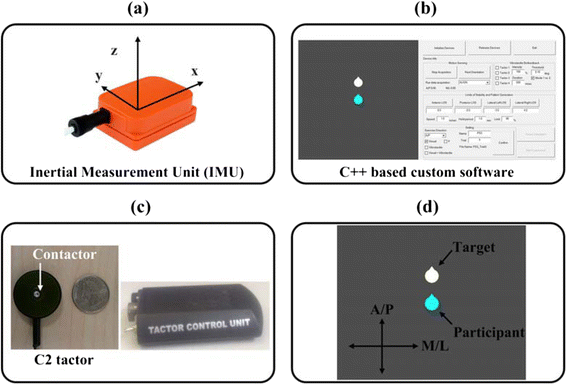
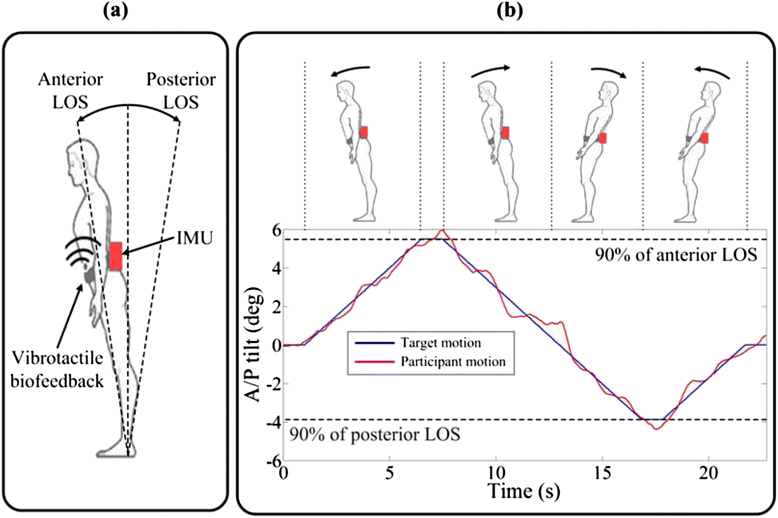
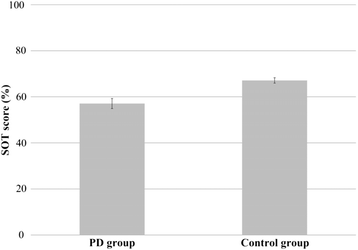
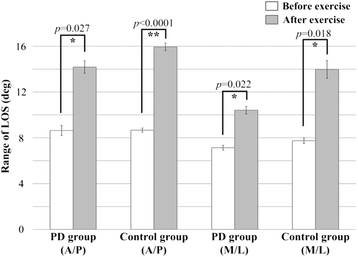
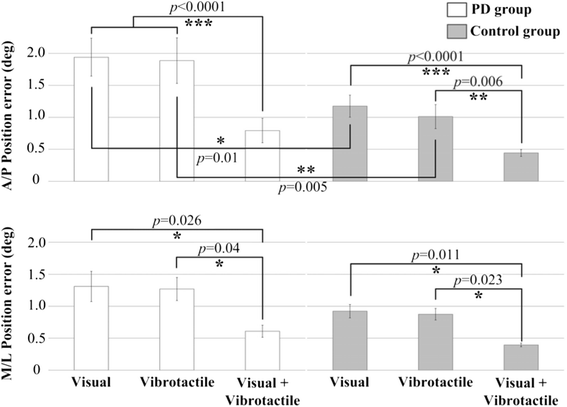
Similar articles
-
The Effects of Coding Schemes on Vibrotactile Biofeedback for Dynamic Balance Training in Parkinson's Disease and Healthy Elderly Individuals.IEEE Trans Neural Syst Rehabil Eng. 2018 Jan;26(1):153-160. doi: 10.1109/TNSRE.2017.2762239. Epub 2017 Oct 17. IEEE Trans Neural Syst Rehabil Eng. 2018. PMID: 29053448
-
Usability and Validation of the Smarter Balance System: An Unsupervised Dynamic Balance Exercises System for Individuals With Parkinson's Disease.IEEE Trans Neural Syst Rehabil Eng. 2018 Apr;26(4):798-806. doi: 10.1109/TNSRE.2018.2808139. IEEE Trans Neural Syst Rehabil Eng. 2018. PMID: 29641384
-
Determining the preferred modality for real-time biofeedback during balance training.Gait Posture. 2013 Mar;37(3):391-6. doi: 10.1016/j.gaitpost.2012.08.007. Epub 2012 Sep 28. Gait Posture. 2013. PMID: 23022157
-
Vibrotactile biofeedback devices in Parkinson's disease: a narrative review.Med Biol Eng Comput. 2021 Jun;59(6):1185-1199. doi: 10.1007/s11517-021-02365-3. Epub 2021 May 10. Med Biol Eng Comput. 2021. PMID: 33969461 Review.
-
The role of sensory augmentation for people with vestibular deficits: Real-time balance aid and/or rehabilitation device?J Vestib Res. 2017;27(1):63-76. doi: 10.3233/VES-170606. J Vestib Res. 2017. PMID: 28387692 Review.
Cited by
-
Neck Vibration Proprioceptive Postural Response Intact in Progressive Supranuclear Palsy unlike Idiopathic Parkinson's Disease.Front Neurol. 2017 Dec 20;8:689. doi: 10.3389/fneur.2017.00689. eCollection 2017. Front Neurol. 2017. PMID: 29326649 Free PMC article.
-
Effects of a balance-based exergaming intervention using the Kinect sensor on posture stability in individuals with Parkinson's disease: a single-blinded randomized controlled trial.J Neuroeng Rehabil. 2016 Aug 27;13(1):78. doi: 10.1186/s12984-016-0185-y. J Neuroeng Rehabil. 2016. PMID: 27568011 Free PMC article. Clinical Trial.
-
I-BaR: integrated balance rehabilitation framework.Front Neurorobot. 2024 Jul 3;18:1401931. doi: 10.3389/fnbot.2024.1401931. eCollection 2024. Front Neurorobot. 2024. PMID: 39021504 Free PMC article.
-
Influence of loud auditory noise on postural stability in autistic children: an exploratory study.Sci Rep. 2025 Jun 6;15(1):19882. doi: 10.1038/s41598-025-04686-x. Sci Rep. 2025. PMID: 40481205 Free PMC article.
-
Effects of sensory substituted functional training on balance, gait, and functional performance in neurological patient populations: A systematic review and meta-analysis.Heliyon. 2021 Sep 17;7(9):e08007. doi: 10.1016/j.heliyon.2021.e08007. eCollection 2021 Sep. Heliyon. 2021. PMID: 34604558 Free PMC article. Review.
References
-
- Parkinson’s Disease Foundation, Statistics on Parkinson’s [http://www.pdf.org/en/parkinson_statistics]
-
- Silva MA, Mattern C, Hacker R, Tomaz C, Huston JP, Schwarting RK. Increased neostriatal dopamine activity after intraperitoneal or intranasal administration of L-DOPA: on the role of benserazide pretreatment. Synapse. 1997;27:294–302. doi: 10.1002/(SICI)1098-2396(199712)27:4<294::AID-SYN3>3.0.CO;2-7. - DOI - PubMed
MeSH terms
LinkOut - more resources
Full Text Sources
Other Literature Sources
Medical

